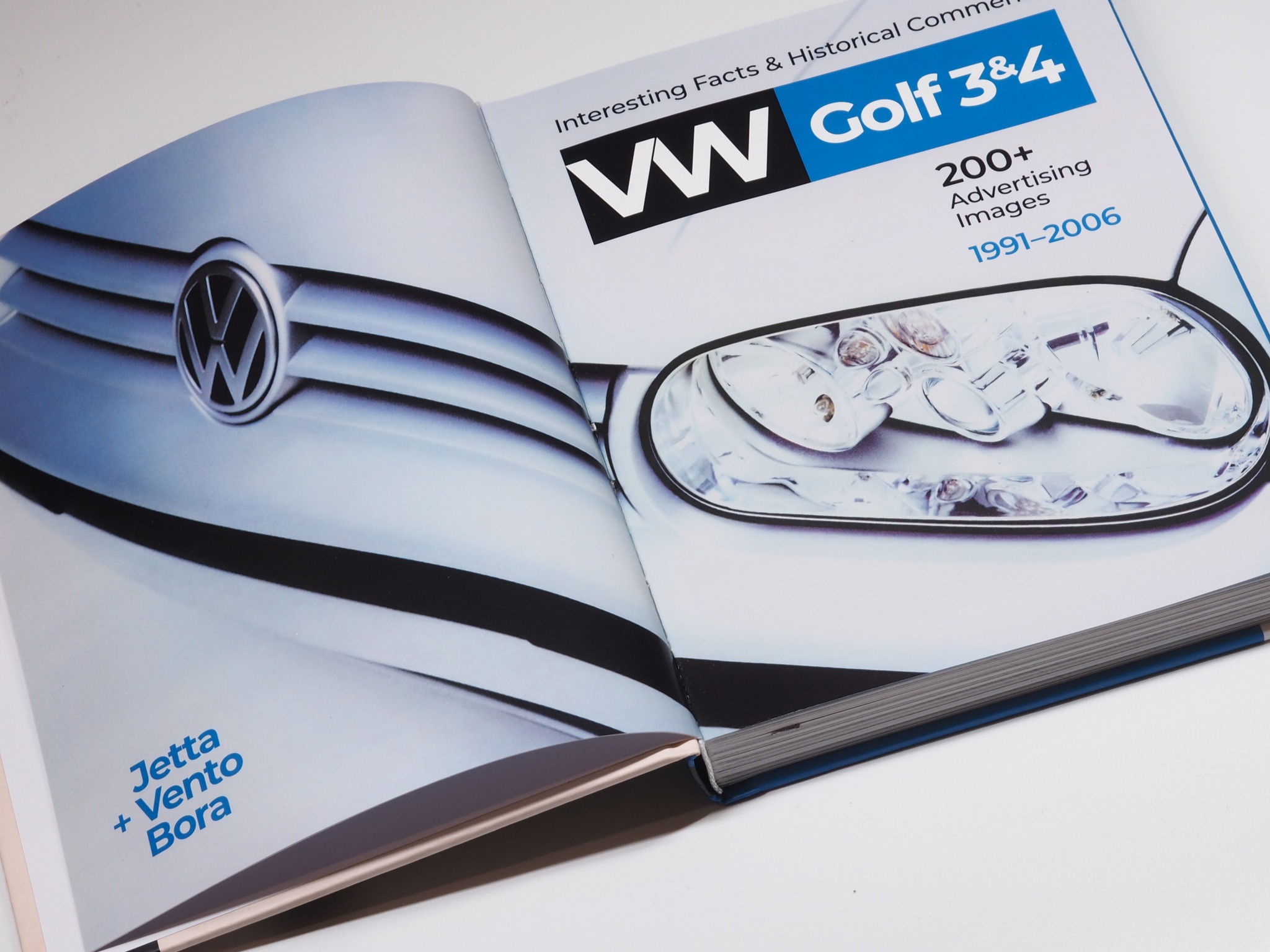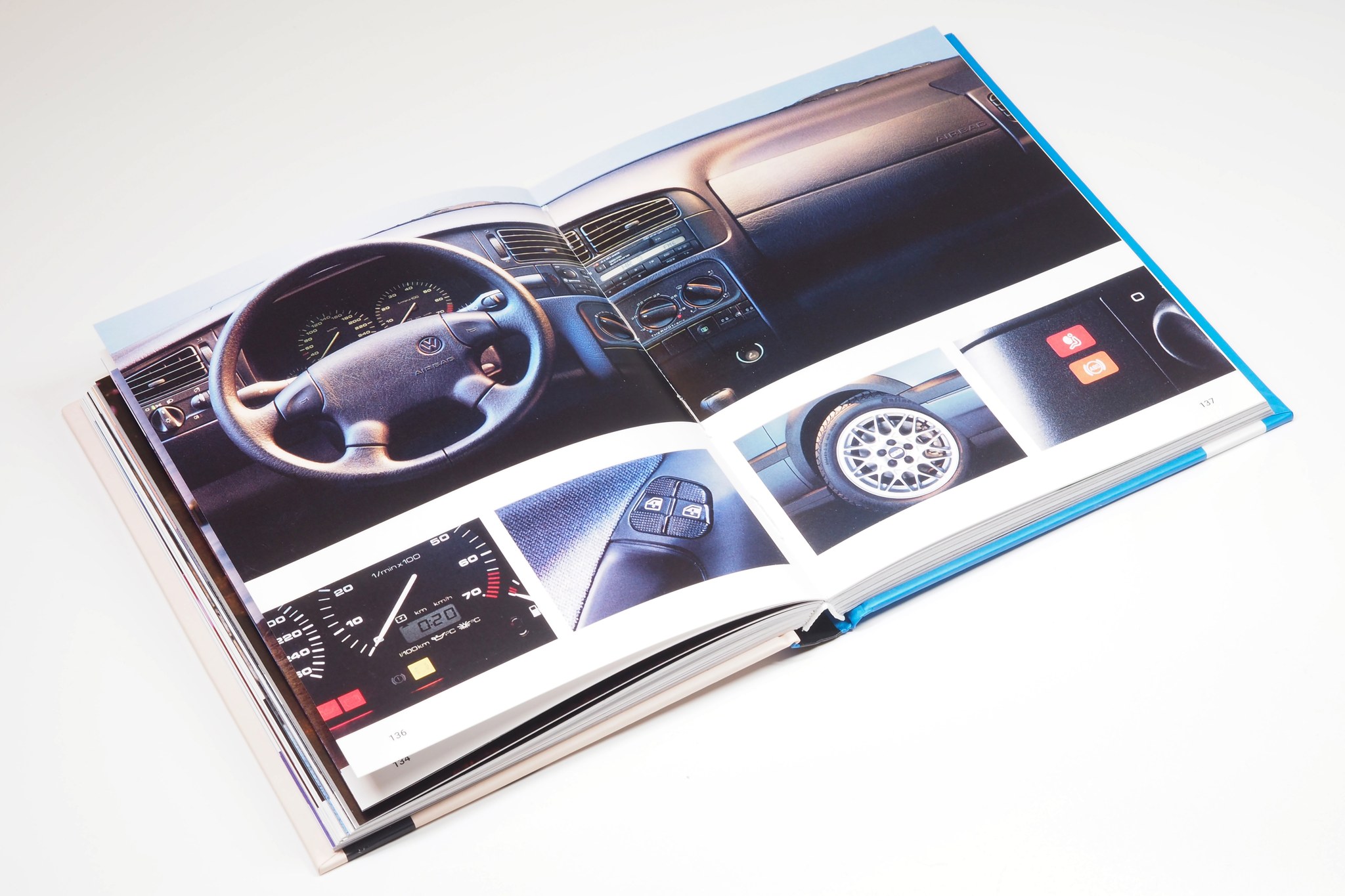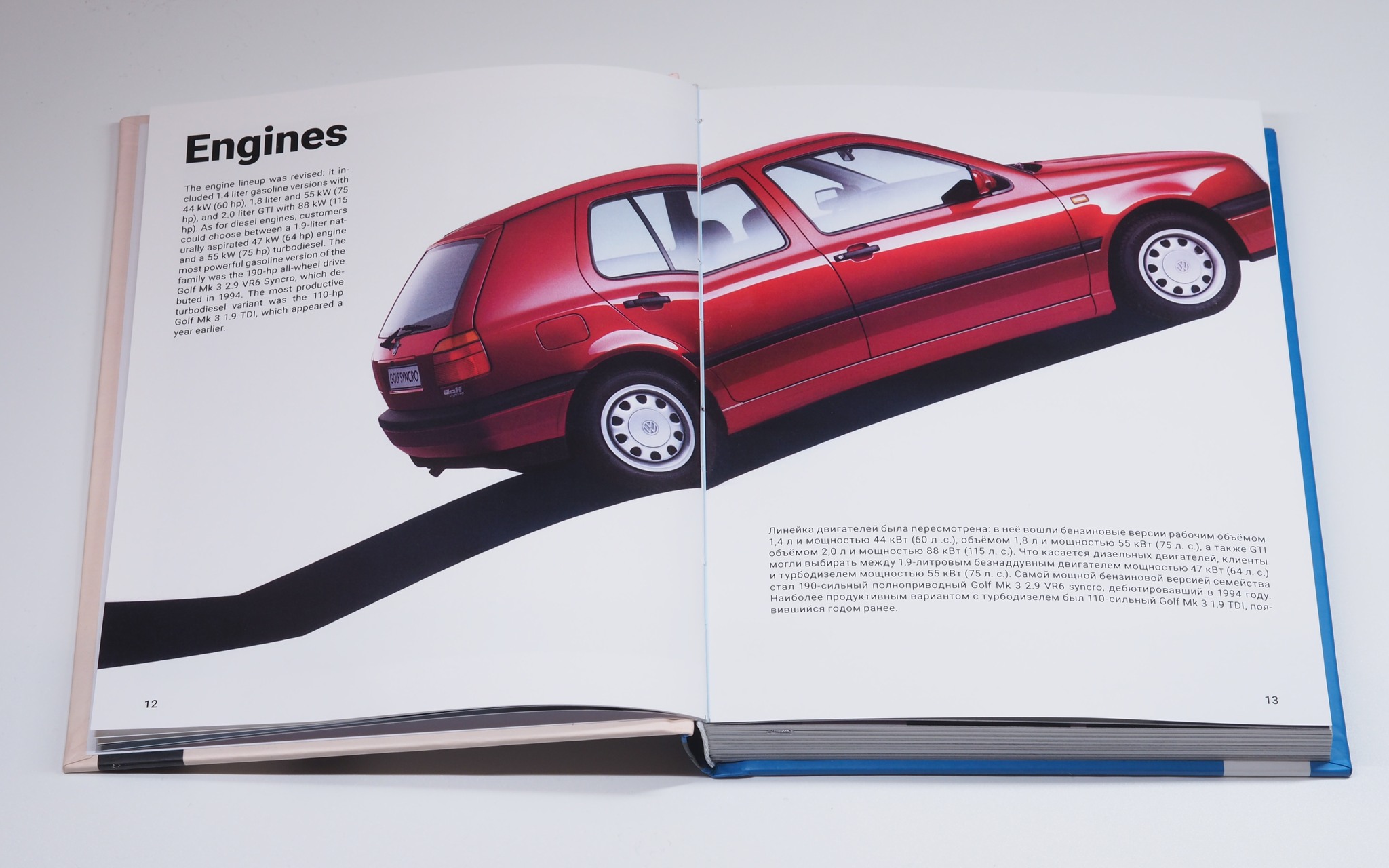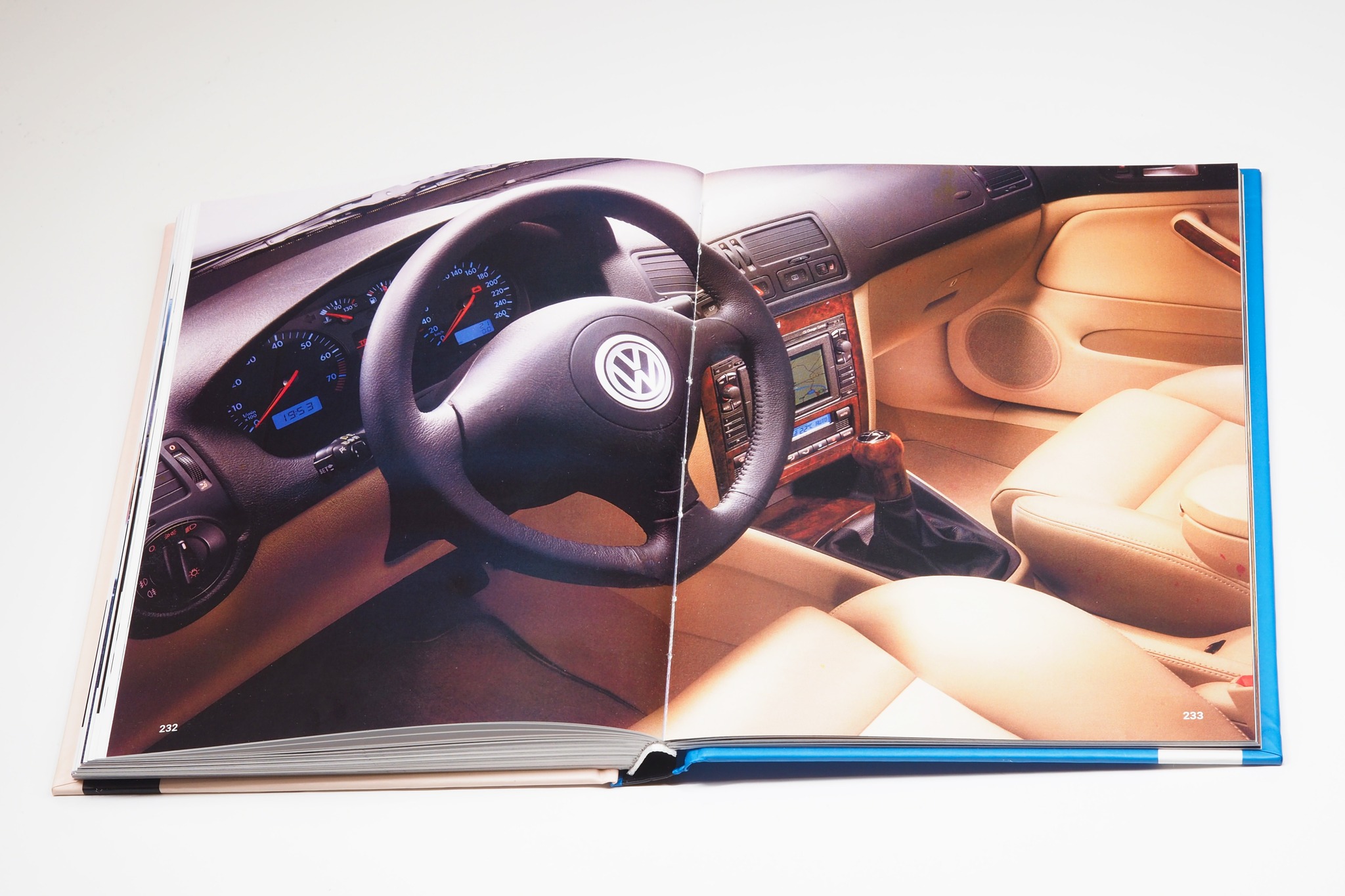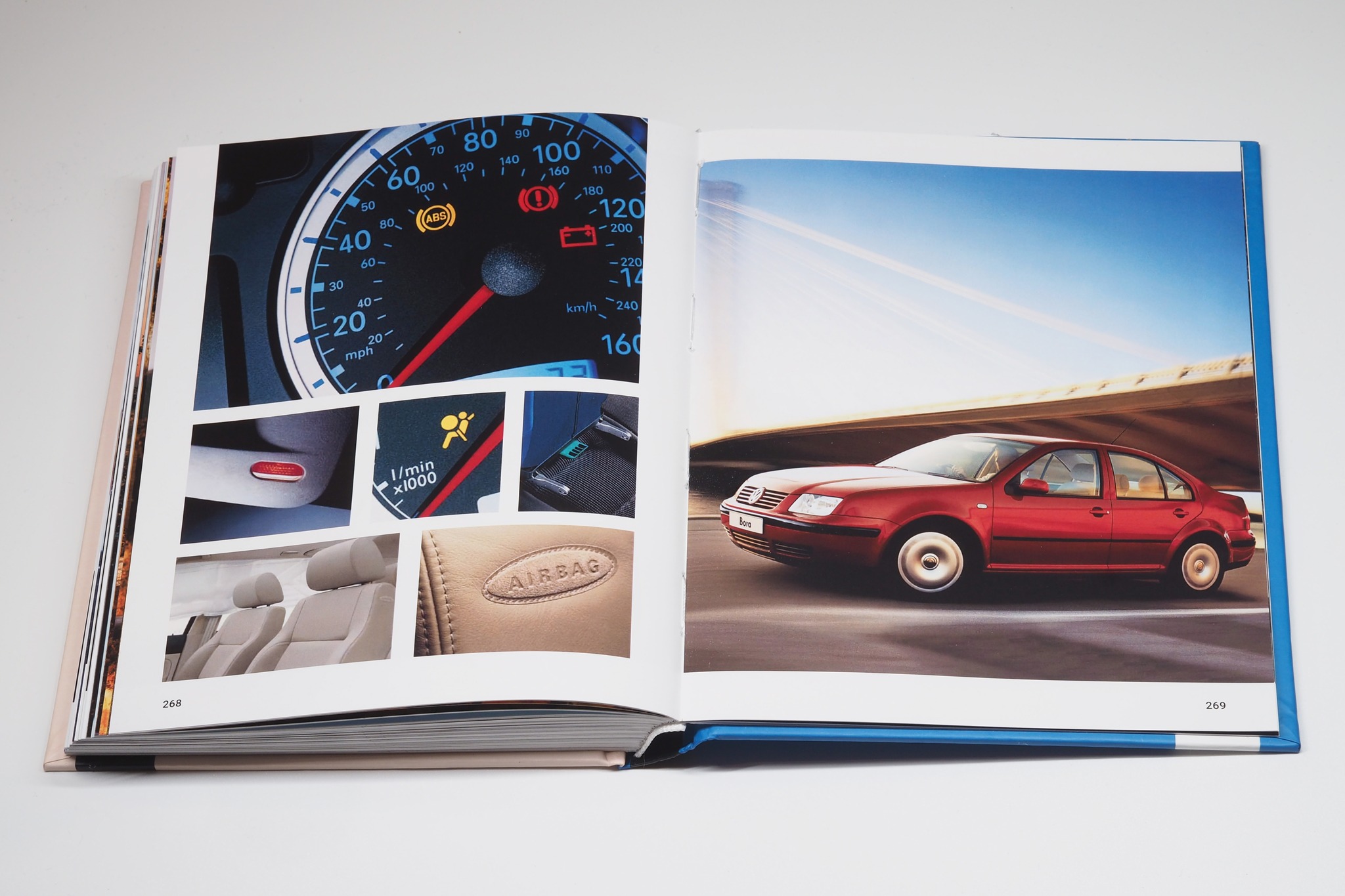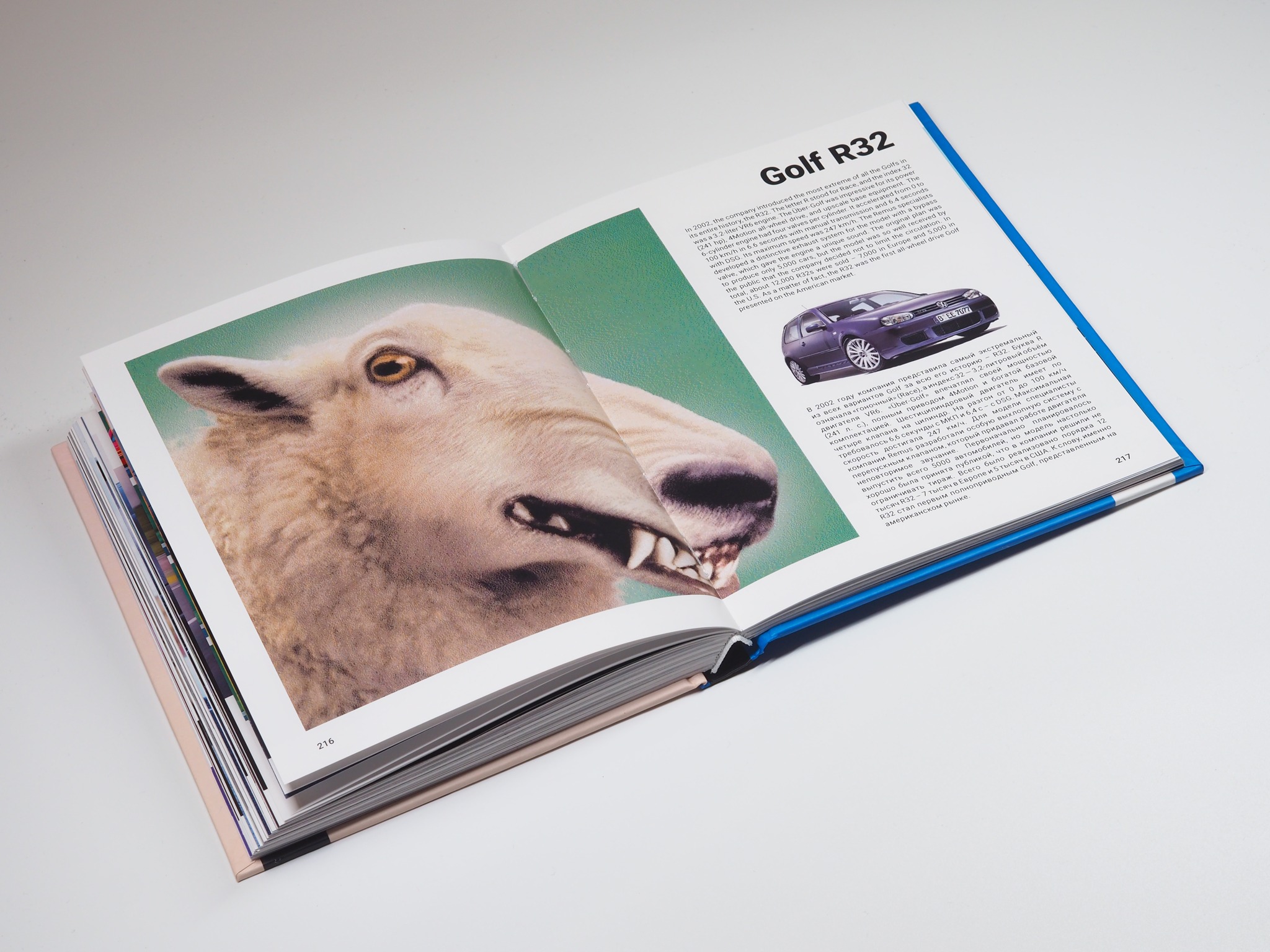Description
VW Golf Mk3&4 Hardcover book (fragment of text)
Work on the third generation model started back in the mid-1980s. In February 1987, chief designer Herbert Schaefer presented nine different versions of the future car to the concern’s board of directors, one of which was approved at the end of the year.
“In the first phase, from Golf I to Golf Mk 2, we made the car bigger, installed more powerful engines, and improved its handling. Now, in the third generation, design comes to the fore. We were able to give the car an appearance that exudes quality and safety,” Herbert Schaefer said.
As a result, the Golf Mk 3 had a recognizable look, despite the fact that the body was completely new. The production model made its debut in August 1991.
To improve the competitiveness of the new product, the range of engines was revised and expanded. It is also worth noting that, taking into account the increased loads on the front axle, all versions except the basic 60-hp were equipped with power steering as standard.
The Golf came in a wide range of versions: CL, GL, GT, and GT Special. There was a choice of 15 body colors, as well as 14 kinds of interior trim, including Nappa leather.
Much attention was paid to safety. Beginning in 1992, buyers were offered front airbags, and side airbags were added in 1996.
The passenger compartment was reinforced, the header rail could be purposefully deformed to absorb impact energy, the doors were reinforced with cross braces, and the backs of the rear seats were protected against penetrating loads.
All this made it possible to significantly reduce the risk of collision injuries. In addition, the ABS system became a standard feature for all versions of the Golf in September 1996.
Of course, there were many other innovations in the new generation. For example the first VR6 6-cylinder engine, the first catalytic converter for next-generation diesel engines, the first TDI and SDI direct injection diesel engines, cruise control…
The new body was not only elegant, but also practical in terms of fuel efficiency. The aerodynamic air resistance coefficient Cx was only 0.30, which was achieved by the new technology of gluing panes, among other things.
In 1993, Volkswagen introduced several new models based on the Golf Mk 3: a convertible, the all-wheel-drive Syncro Mk 2 model, and the first Golf Variant with a station wagon body.
In May 1994, Volkswagen celebrated the release of its 15 millionth Golf (total sales of all generations). Production of the third generation ended in 1997. In total, 4.83 million cars of this generation were manufactured.
The new generation Golf used the time-tested platform of its predecessor. The wheelbase remained unchanged (2,475 mm), but the length increased to 4,020 mm (+35 mm) and width to 1,695 mm (+30 mm).
The front track grew from 1,427 to 1,478 mm and the rear from 1,422 to 1,462 mm, making the car more stable on the road and with better handling.
The engine lineup was revised: it included 1.4 liter gasoline versions with 44 kW (60 hp), 1.8 liter and 55 kW (75 hp), and 2.0 liter GTI with 88 kW (115 hp). As for diesel engines, customers could choose between a 1.9-liter naturally aspirated 47 kW (64 hp) engine and a 55 kW (75 hp) turbodiesel.
The most powerful gasoline version of the family was the 190-hp all-wheel drive Golf Mk 3 2.9 VR6 Syncro, which debuted in 1994. The most productive turbodiesel variant was the 110-hp Golf Mk 3 1.9 TDI, which appeared a year earlier.
Read the continuation of VW Golf Mk3&4 story in the book.
Other books about history of Volkswagen:

